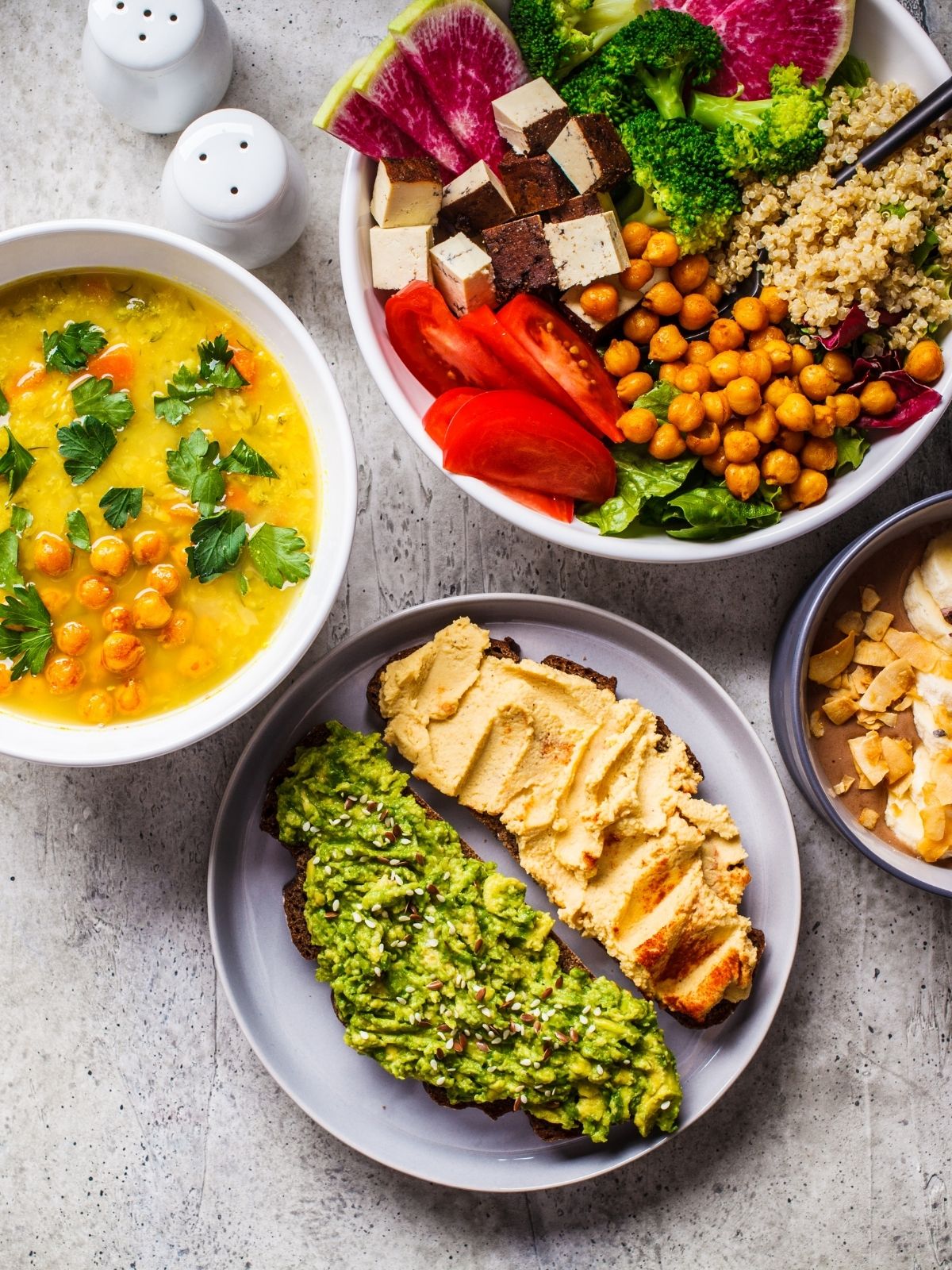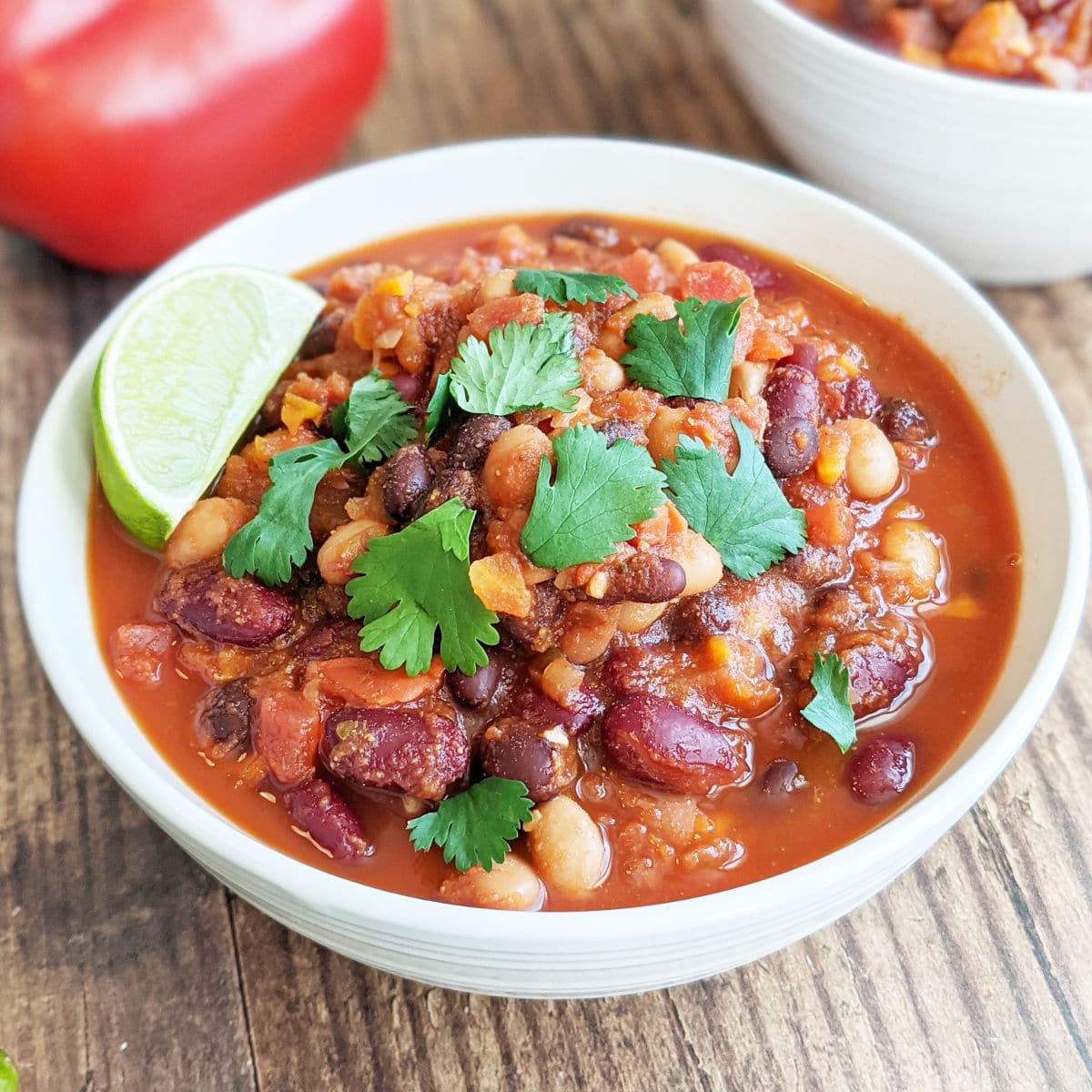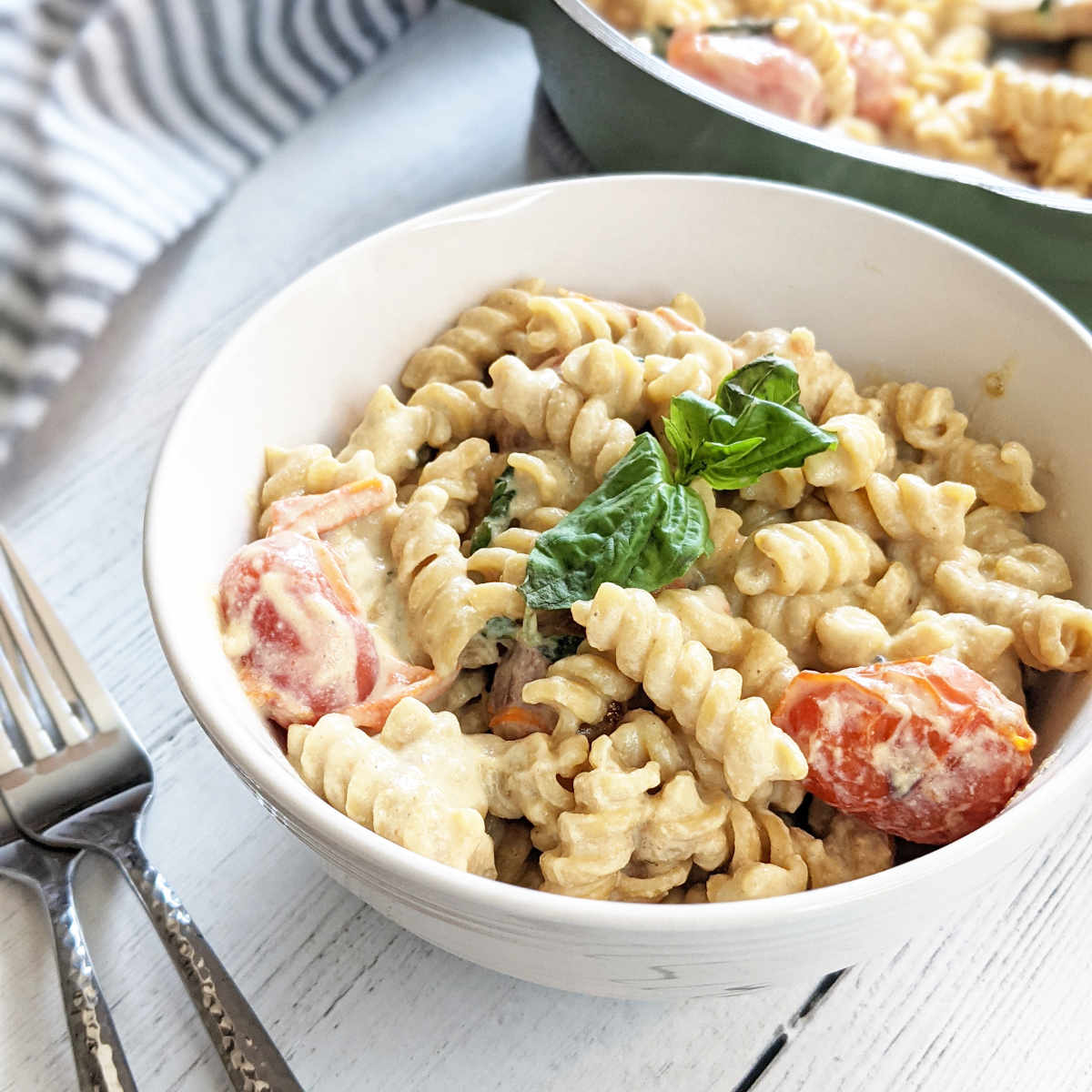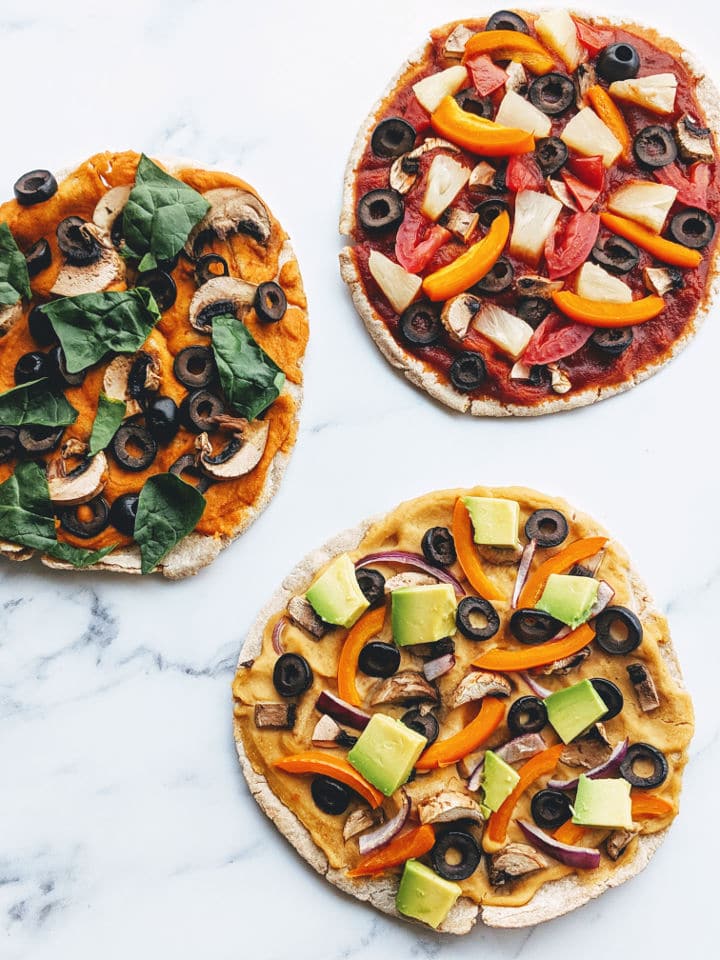Everything you need to know about a healthy plant-based diet

Why a Whole Foods Plant-Based Diet?
If you’re new to a plant-based diet and aren’t sure exactly what it means, we’re about to break it down for you!
Eating plant-based is one thing, but eating WHOLE FOODS PLANT-BASED (WFPB) is a whole other category. Sure, oreos and soda are vegan, but we’re here to show you how to eat a healthy plant-based diet so that you flourish and THRIVE.
It’s not enough to eat a plant-based diet, we need to eat a healthy, plant-based diet.
– Dr. Michael Greger
More and more scientific evidence is pointing to a whole foods plant-based diet as the healthiest diet for humans. Scientific research highlighted in The China Study, the most comprehensive study of nutrition ever conducted, shows that a plant-based diet can reduce the risk of type 2 diabetes, heart disease, certain types of cancer, and other major illnesses.
Here we’re using the term diet, but really it is a lifestyle. This isn’t a short-term fad diet, detox, cleanse, or what have you. It’s a life-long change. We’re using the term diet in the general sense of what we eat, not to be confused with the broad term of diet to restrict or limit ourselves to reach a certain goal or physique.

What is a Whole Foods Plant-Based Diet?
It’s exactly how it sounds. It’s a diet centered around whole foods meaning, foods in their whole or minimally processed form, that is based either completely or mostly around plants.
The basic principles of a whole-foods, plant-based diet are as follows:
- Centered around whole or minimally processed plant foods
- Limits or avoids animal products including meat, dairy, eggs, or honey
- Excludes highly processed foods, like refined white flour, added sugars, and oils
We’ll dive into the specifics a bit more below.
If this sounds scary at all to you, don’t worry, many of the foods you already eat are probably WFPB without even realizing it. We’ll show you how easy it really is to eat this way and make it a lasting change that’ll have you feeling so good, you’ll wonder why you didn’t do it sooner. We promise it’s less extreme than you are probably thinking right now.
Some people think the “Plant-Based Whole Foods” diet is extreme. Half a million people a year will have their chests opened up and a vein taken from their leg and sewn on to their coronary artery. Some people would call that extreme.
– Dr. Caldwell Esselstyn
What can I eat?
Foods to include
Here’s a list of foods that can be included without limit. Eat these in abundance to enjoy the effects of a whole foods plant-based diet.
All fruits (fresh or frozen): Apples, avocados, bananas, berries, citrus fruits, pears, peaches, pineapple, mango, etc.
All vegetables (fresh or frozen): Cucumber, tomatoes, kale, spinach, broccoli, cauliflower, carrots, asparagus, onion, peppers, etc.
All starchy vegetables: Potatoes, sweet potatoes, butternut squash, pumpkin etc.
All legumes: Black beans, kidney beans, peas, chickpeas, lentils, peanuts, tofu, and tempeh etc.
All whole grains: Quinoa, whole wheat breads and pastas, brown rice, rolled oats, brown rice pasta, barley, etc.
Unsweetened plant-based milks: Soy milk, oat milk, almond milk, cashew milk, coconut milk, etc.
Nuts, seeds and nut/seed butters: Almonds, cashews, walnuts, pumpkin seeds, sunflower seeds, chia seeds, flax seeds, natural peanut butter, tahini, etc.
Spices, herbs and seasonings: Basil, oregano, rosemary, turmeric, curry power, cinnamon, black pepper, salt, etc.
Condiments: Salsa, mustard, natural ketchup, nutritional yeast, soy sauce, vinegar, lemon and lime juice, etc.
Foods to limit or avoid
These are foods that should be avoided, or limited significantly if you still choose to consume them.
All meat: beef, pork, poultry, fish, seafood, etc.
All dairy: Milk, yogurt, cheese, etc.
Eggs: Alone or in baked or packaged goods, etc.
Foods to exclude
These are foods that are heavily processed and should be excluded.
Packaged and convenience foods: Chips, crackers, cereal bars, frozen dinners, etc.
Processed vegan-friendly foods: Plant-based meats like Tofurkey, faux cheeses, vegan butters, etc.
Fast food: French fries, cheeseburgers, hot dogs, chicken nuggets, etc.
Added sugars and sweets: Table sugar, fruit juices, sodas, pastries, cookies, candy, sweet tea, sugary cereals, etc.
Refined grains: White rice, white pasta, white bread, bagels, etc.
Artificial sweeteners: Equal, Splenda, Sweet’N Low, etc.

Adopting a Whole Foods Plant-Based Diet
Now that we know what all it entails, you’re probably wondering how to go about adopting this sort of life style. It can seem daunting to completely change up your diet and eliminate many of the foods that you know and love.
It doesn’t have to be hard though, and there are many tips to ease you into the transition. Here are a few that will help get you started on this journey:
1. Start with the easy swaps
Swapping regular animal-based or refined products for their vegan-friendly or unrefined versions is great place to start and easy to implement. Take inventory of what you have and start searching for replacements.
Here are some examples:
- Dairy milk to Plant milk (e.g. soy milk or almond milk)
- White rice to Brown rice
- Dairy yogurt to Plant milk yogurt
- White pasta to Whole Wheat Pasta
- White bread to Whole Grain Bread
2. Add first, then subtract
A gradual change is undoubtedly the easiest and will help you make the switch to this lifestyle sustainable. It’s easy to get hung up on what you are excluding, but many people who make the switch boast that they ended up eating more variety.
Instead of completely removing meat, dairy, and eggs and processed foods overnight, start adding whole plant foods to your plate. You can do this by adding a serving of beans to dinner, a side of whole grains to your lunch, plant milk to your oats or cereal, carrots with hummus rather than crackers, and fruit before your usual dessert.
As you keep increasing the number of whole plant foods you add, your palate will adjust and you’ll naturally eat less and less of the animal and processed products.

3. Find simple plant-based recipes
If you’re not much of a cook or not sure how to cook this way, no worries! There are many resources for easy, plant-based recipes that don’t require a lot of time or ingredients. Check out our Instagram for lots of free recipes! We also have several on our website here.
If you’re still unsure what to eat to ensure a proper, balanced diet, consider joining the HML Meal Planner. It takes the guesswork out of what to eat with delicious, well-balanced recipes and makes planning your week a breeze. For more info, click here.
The Benefits of a Whole Food Plant-Based Diet
There are countless benefits to this lifestyle, but the major benefits are below.
- Weight loss & easier weight management – Due to the nature of whole foods, those who eat this way tend to be leaner and are able to keep excess weight off without counting calories or doing hours of cardio. Find out more about the secrets to weight loss on a whole food plant-based diet.
- Reduced risk of chronic diseases – A whole foods plant-based diet is the only diet proven to reverse heart disease and type 2 diabetes.
On top of that, many people experience more energy, faster recovery, less colds, clearer skin, better sleep, improved digestion, and more! These all can vary from person to person, but many of our readers credit these benefits to their plant-based diets. Check out our Friday Features on Instagram & Facebook to see what all people have experienced.
You can have all the riches and success in the world, but if you don’t have your health, you have nothing.
– Steven Adler
It’s truly incredible how powerful the influence of diet can be on our overall health. Small changes like adding more plants to our diets can result in exceedingly beneficial outcomes. It’s inarguably the easiest, and best choice to make to increase our quality of life.
Let’s start moving towards our best health yet, because there’s no time like the present!
Stay Connected
We’re here for you! Join our plant-powered community at Health My Lifestyle to get started on making health truly a lifestyle. For an easy 3-day whole food plant-based meal plan, sign up for our email list below.
Follow on Facebook to see tips, recipes, recent articles, and a meme or two
Follow on Instagram for actionable and easily digestible infographics
Follow on Pinterest for more recipes and resources
Join our newsletter so you never miss the latest on Health My Lifestyle + receive a free 3-day meal plan you sign up!
